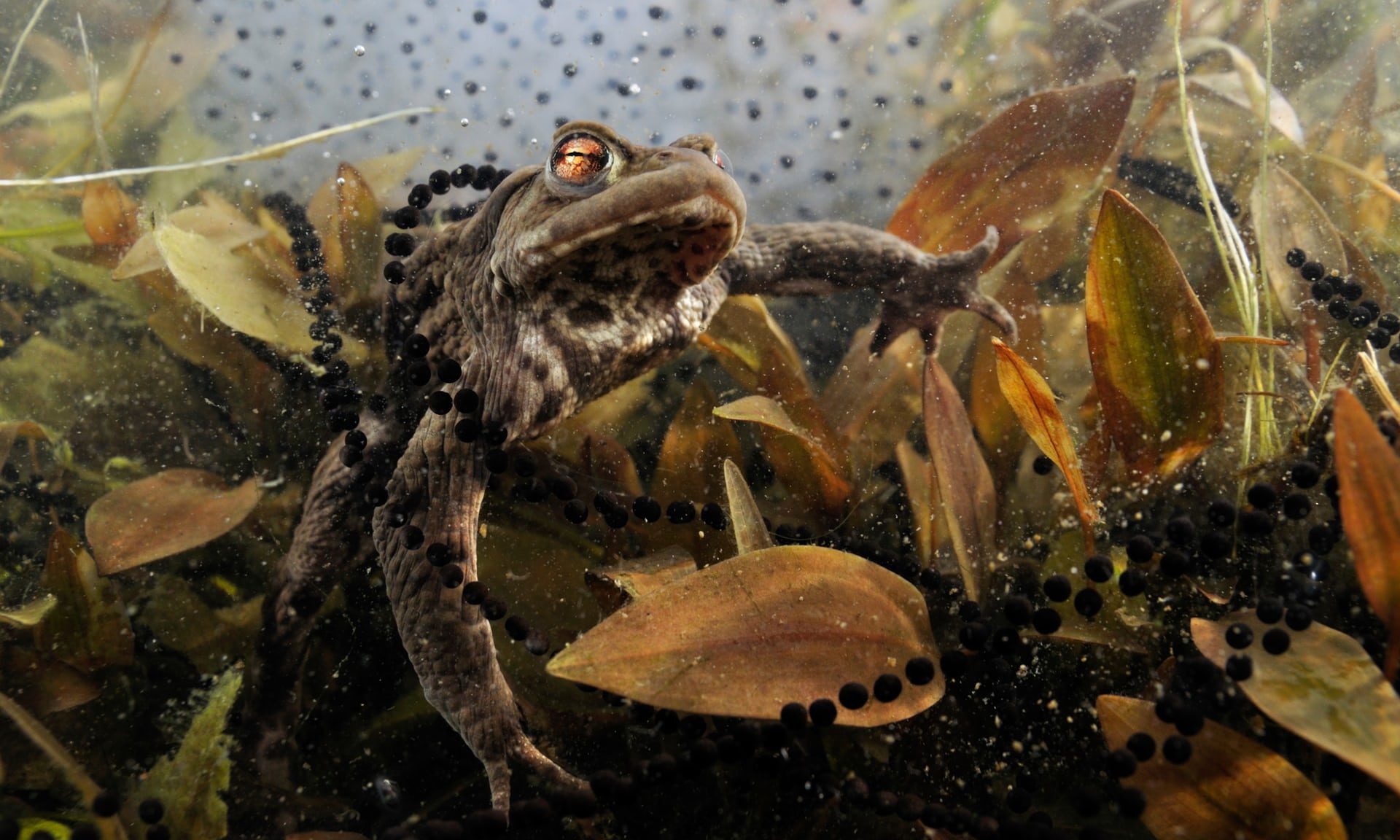
Reports of toads in gardens have fallen by nearly a third since 2014, while sightings of frogs have dropped by 17% over the same period, according to the Big Garden Birdwatch, the RSPB's wildlife survey.
Frogs were the most common non-bird garden visitor, seen in 39% of the more than 174,000 gardens which took part in the survey this year, while toads were only found in one in five gardens.
These declines are mirrored by other surveys, including data from volunteer groups who help toads cross the road, which found toad numbers have fallen by more than two-thirds over 30 years.
The declines in gardens are linked to a loss of ponds in gardens and the RSPB is calling on people to take simple measures to help garden amphibians, which rely on sources of water to survive but also often live in longer grass, logpiles or stones.
"There are lots of simple things we can all do in our outdoor spaces to make them perfect for wildlife," said Daniel Hayhow, RSPB conservation scientist. "Creating a small pond in your garden, or a pool using a washing-up bowl is so simple to do and could make all the difference."
Ponds need stones to help amphibians in and out, while paving around ponds can be a barrier to amphibians because it becomes too hot in summer.
Toads require places to hibernate, such as logpiles or even upside down flowerpots, while patches of longer grass create microclimates, which keep toads and frogs cool in summer and help them evade predators and find food.
"The food they really need are slugs, snails, ants and spiders," said Hayhow. "They should be really good gardeners' friends amongst your vegetables if you allow them to be your pest controllers, rather than killing them off with pesticides. The diversity of habitats in your garden is really key."
While the garden survey does not provide definitive population data, Hayhow said it provided "another flag" to raise awareness of amphibian declines.
There was a small increase in Big Garden Birdwatch sightings of hedgehogs between 2017 and 2018, with longer-term population data showing a loss of two thirds of the British population between 1995 and 2018. Despite these declines, 65% of people spotted one in their gardens over the past year as people create holes in fences and other measures to help hedgehogs.
"We've got reasons to be cautiously optimistic with some of the conservation measures that people are putting into their gardens appear to be helping hedgehogs," said Hayhow.



Comment: While access to viable sources of water and pollution are surely issues, a wide variety of species are seeing their numbers collapse and the causes aren't always so obvious, so what is going on? What is clear is that we are witnessing the next massive extinction event on our planet: